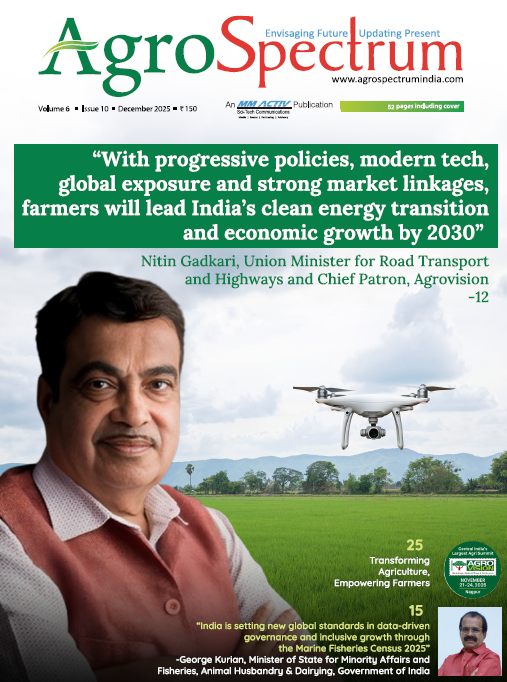Friday, 28 November 2025

The Indian agri industry, in 2025, is experiencing transformative technological innovations, especially in AI, digital platforms, precision agriculture, and sustainability-focused practices. Mobile and web-based platforms use AI and machine learning to give farmers real-time advice on crop management, weather forecasts, pest control, and input optimisation. Drones, satellite imagery, and IoT devices enable farmers to monitor soil health, crop growth, and resource usage remotely. This supports site-specific interventions that reduce input costs, save water, and increase output. Blockchain solutions now help track farm-to-fork produce, enhancing food safety, reducing fraud, and supporting export growth. New biotech and breeding efforts have resulted in seeds and plants more resistant to drought, floods, and disease, supporting farm resilience and food security. E-commerce platforms connect farmers directly to buyers, eliminate middlemen, and boost export opportunities. Apps also enable digital payments and loans for rural agri-businesses.
There is a clear shift toward climate-smart irrigation, carbon foot printing, organic farming, sustainable intensification, and agroforestry. Horticulture and specialty crops are growing quickly, with production and export ambitions rising—especially as farmers transition from subsistence to commercial models supported by technology.
Latest innovations in Indian fisheries and livestock farming include digital technologies like AI and IoT for precision farming, advanced aquaculture systems such as Biofloc and Recirculating Aquaculture Systems (RAS), and modernised livestock management with automated milking, robotic assistants, and advanced feed formulations. Wearable Biosensors and Smart Collars: Real-time monitoring of animals’ vital signs improves herd health management, enabling earlier disease detection and more precise breeding. Automated Milking Systems (AMS): Robotics-powered milking machines streamline dairy operations, boosting productivity and animal welfare.
In AI-Driven Precision Feeding, algorithms dynamically adjust diets for livestock using data on breed, health, and lifecycle stage—optimising yield and reducing waste. Through IoT and Blockchain Traceability, the IoT sensors track feeding, movement, and environment while blockchain secures digital records for food safety and regulatory compliance. Mobile Apps and Farm Dashboards: Farmers use cloud and mobile platforms for logistics, scheduling, analytics, and market linkage, making data-driven decisions for their operations.
Government initiatives and policy frameworks such as Pradhan Mantri Matsya Sampada Yojana (PMMSY), digital platforms, and state-level pilot programs are promoting technology adoption, better resource management, and sustainability in both fisheries and livestock sectors. Continuous investment in cold-chain, disease surveillance, and platform-based management is expected to solidify India’s leadership in these fields throughout 2025 and beyond.
The current status of the agriculture industry in India in 2025 is marked by steady growth, rising productivity, and a rapid embrace of advanced technologies. Agriculture continues to provide livelihood to nearly 60 per cent of the population and contributes 17-18 per cent to national GDP, all while undergoing a decisive transformation toward innovation, sustainability, and resilience.
To read more, click : https://agrospectrumindia.com/e-magazine